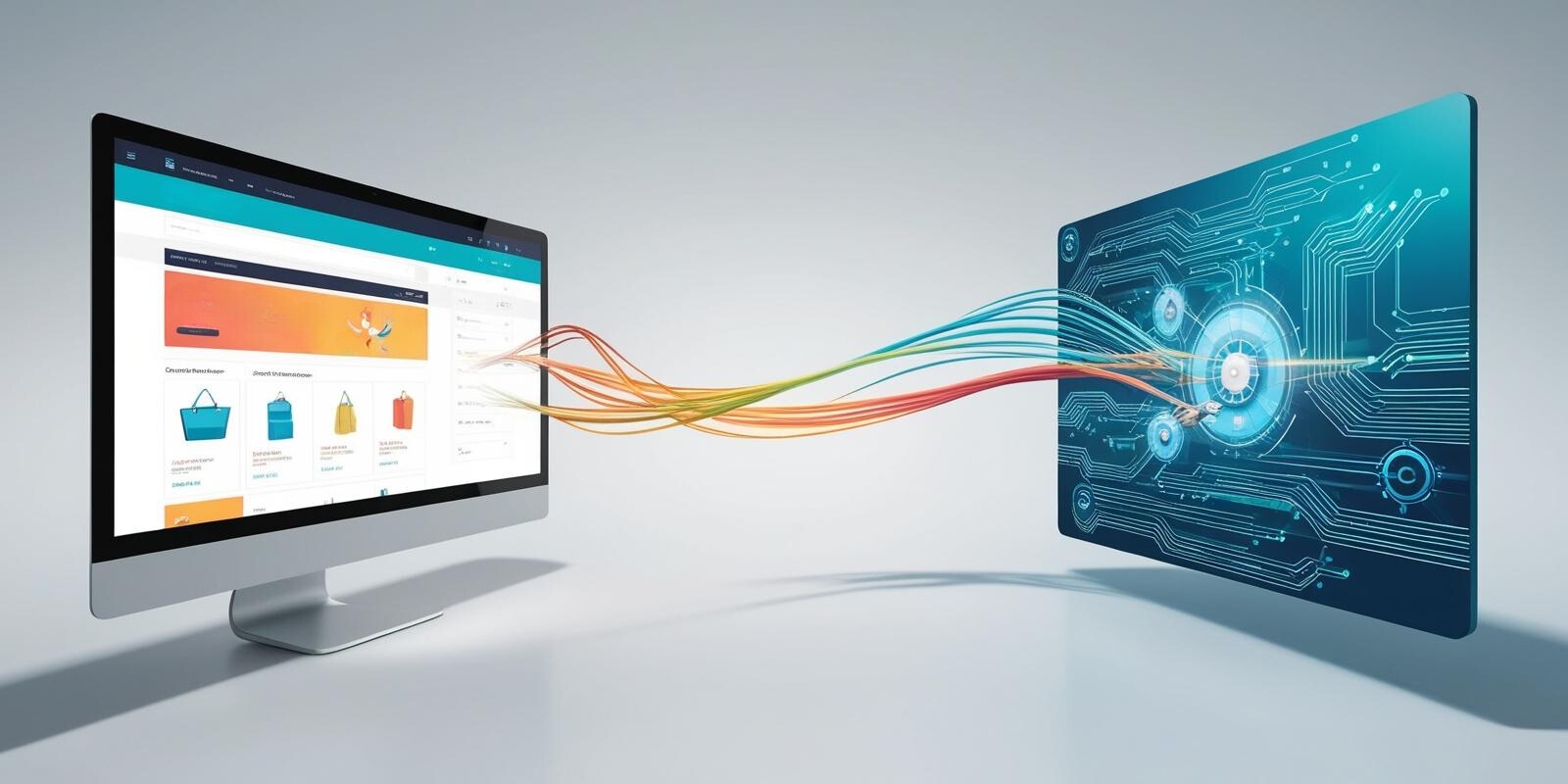Online shopping is evolving rapidly, and businesses are constantly seeking innovative ways to enhance their offerings. One of the latest concepts making waves is headless commerce. But what is it, and why does it matter?
 What Is Headless Commerce?
What Is Headless Commerce?
In regular online shopping systems, the parts customers see (like a website) and the parts that do the work (like keeping track of orders) are connected. This setup can make updates and changes difficult because any adjustment in the back-end directly impacts the front-end design. Headless commerce solves this issue by separating these two parts, allowing them to work independently. Using APIs, headless systems make it easier for businesses to create flexible, unique websites without worrying about breaking something else.
Why Is Headless Commerce a Big Deal?
Headless commerce is exciting because it’s flexible and easy to change. For example, a sportswear brand used it to connect their website, app, and store systems all at once, creating a faster, more enjoyable shopping experience. With headless commerce, businesses can achieve three major advantages:
- Make Websites Look Unique: Businesses can design something special without being stuck with pre-made templates.
- Adapt Quickly: Easily add features like apps or new technologies without disrupting the system.
- Prepare for the Future: Stay ahead as new technology emerges, with systems ready to evolve alongside innovations.
Benefits and Use Cases of Headless Commerce
Separating the front-end and back-end offers many benefits that make headless commerce ideal for various businesses. Businesses can make their websites run faster by optimizing each part independently. For instance, a news website can update stories quickly without slowing down the whole system. A single back-end system can also power multiple front-ends, like a website, mobile app, and even in-store screens, making it easier for a retailer to share consistent information everywhere. Additionally, headless commerce allows designers the freedom to create without worrying about breaking the back-end, while APIs enable seamless connections to payment systems or customer databases. These benefits are especially useful for businesses selling across multiple channels, brands prioritizing speed, and those offering custom shopping experiences. It ensures consistent information and smooth interactions for retailers with websites, apps, marketplaces, and physical stores.
Challenges of Adopting Headless Commerce
While headless commerce has clear benefits, there are four significant challenges businesses must consider:
- Higher Initial Costs: Setting up a headless system requires skilled developers and involves significant upfront investment.
- Complexity in Management: Businesses must manage separate front-end and back-end systems, which can increase operational complexity.
- Dependency on APIs: APIs are essential for headless commerce, but they require proper implementation and maintenance to prevent disruptions.
- Resource Demands: Ensuring readiness for transitioning means allocating sufficient time, budget, and talent to execute the change effectively.
 How APIs Power Headless Commerce
How APIs Power Headless Commerce
APIs are essential for headless commerce as they enable the front-end and back-end to share data and operate seamlessly. For example, a product API fetches item details from the back-end and displays them on the website, while a payment API securely processes transactions. Analytics APIs can track customer behavior and provide insights for optimization. These integrations make headless commerce flexible and efficient by connecting with third-party tools effortlessly.
Cost Analysis: Is Headless Worth It?
When considering headless commerce, it’s important to weigh three key financial factors:
- Upfront Costs: Development and initial setup require significant investment, especially for custom solutions.
- Ongoing Costs: Maintenance, updates, and scaling add to the expense but are essential for optimal performance.
- Long-Term Savings: Faster loading times, better customer satisfaction, and scalability often lead to higher revenues and reduced technical debt over time.
Businesses should evaluate these factors against their goals to determine if headless commerce aligns with their long-term strategy.
Future Trends in Headless Commerce
Looking ahead, headless commerce is poised to evolve further with exciting trends. AI-driven tools are being used to personalize customer experiences with tailored recommendations. AR/VR technology is creating immersive shopping options like virtual try-ons or interactive product demos, while low-code platforms are simplifying the setup of headless systems, making them accessible to more businesses. These advancements ensure headless commerce remains a competitive and adaptable solution for future needs.
Is Headless Commerce Here to Stay?
Headless commerce is more than a trend. It helps businesses keep up with changes, grow, and offer better shopping experiences. It’s flexible, scalable, and ready for future tech like AI and virtual reality. Of course, it can cost more at first and might need skilled developers, but the long-term benefits are worth it.
By using headless commerce, businesses can stand out and stay ready for the future of online shopping.
